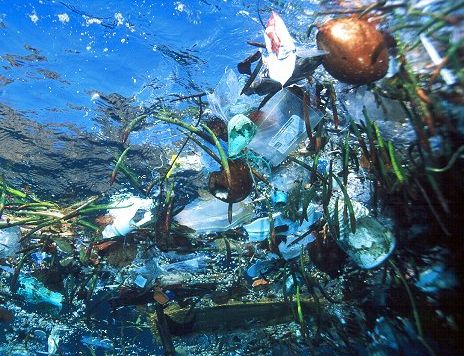
Since the 1970s, the Great Pacific Garbage Patch — an area of the ocean clotted with plastic microparticles — has grown 100-fold. And this is very bad news, not only because of the creatures it harms but because of the ones it helps.
According to a new study from the Scripps Institution of Oceanography, every cubic meter of ocean in the area, a Texas-sized chunk of ocean located 1,000 miles north of Hawaii, has about 100 times more plastic than it did 40 years ago.
While many of the samples 40 years ago found little or no plastic, vast stretches of the North Pacific are now polluted with billions of tiny pieces of confetti-like trash that comes from garbage that floats out to sea and breaks down in wind and waves.
That’s directly harmful to animals like fish and sea turtles, which eat the tiny plastic pieces thinking that they’re food. But it’s a boon to the water strider, a marine insect that needs to lay its eggs on something solid. The bugs, also called “sea skaters,” have in the past made do with floating wood and other bits of flotsam, but the increasingly dense plastic patch gives them a new place to breed. That means more water striders, which could mean more competition for the zooplankton and fish larvae that they and other animals eat, which potentially throws off the entire ecosystem.
The microplastic is intensely difficult to clean up, so it’s critical to keep plastic out of the ocean to keep the problem from getting worse. About 80 percent of the plastic in the Pacific Garbage Patch originates on land. Conservationists are hoping that this new information will help spur politicians to make additional laws about single-use plastic, like shopping bags. If they won’t, let’s sic the water striders on ’em.




